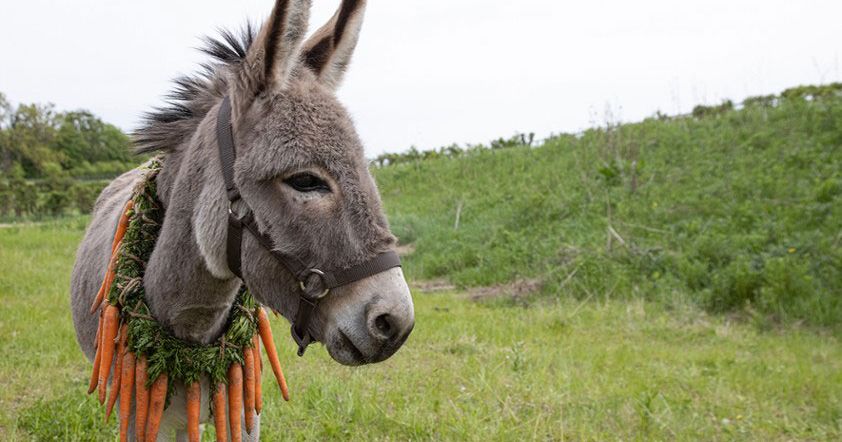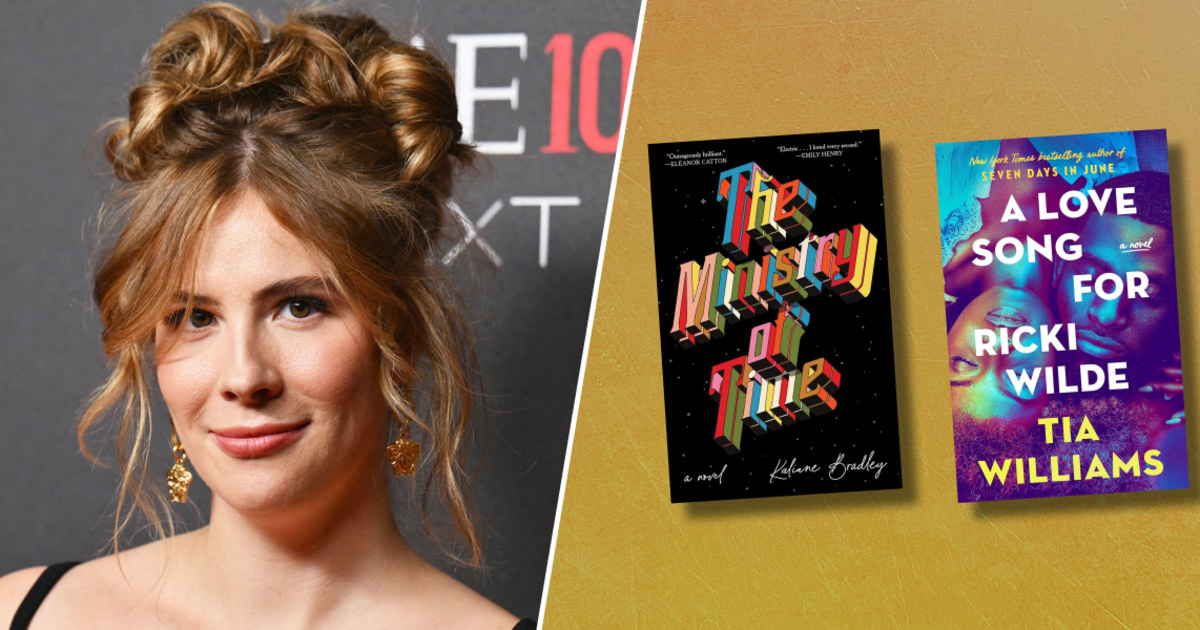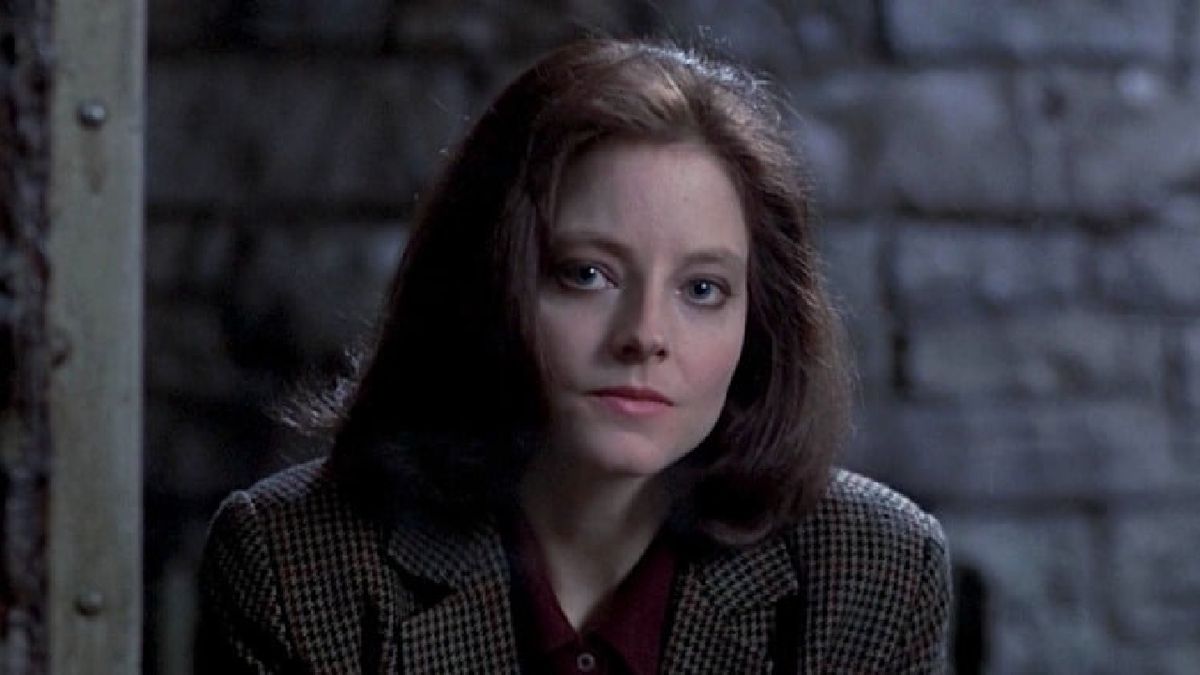
Welcome to Sad-Donkey Autumn
I used to get letters from a donkey. The donkey wasn’t my choice — my grandparents actually picked out Muffin the Mule, technically half horse, from a donkey rescue and adopted her in my name. But in retrospect there was no better animal pen pal for an ornery preteen with a bad block fringe and a tenacity that teachers politely described as “knowing her own mind.” Being stubborn as a donkey and also the patron of one, like an eccentric dowager in a regency novel, primed me for what was to come: Sad-Donkey Autumn 2022.
Donkeys play key roles in three of this fall’s most anticipated films: An ass has an unfortunate run-in with the shipwrecked superrich in Ruben Östlund’s Palme d’Or-winning social satire Triangle of Sadness; the star of Jerzy Skolimowski’s Cannes favorite EO is a put-upon donkey walking heavily around Europe from one perilous situation to the next; and in Martin McDonagh’s The Banshees of Inisherin, Colin Farrell’s sweet, lonely buffoon Pádraic spends most of his time hanging out with his beloved miniature donkey, Jenny (which is also the technical term for a female donkey, per Muffin).
Not only do these donkeys appear in enough movies for a brave writer to declare it a seasonal trend, these donkeys are all portrayed in peril, downtrodden, done wrong. It’s no secret that audiences connect strongly with animals in danger (see: any live-action pet movie committed to film in the ’90s), but this year’s jackasses are taking Eeyore to new depths. Forget Francis the talking army mule (who was in seven Universal films. Let me just repeat that: They made seven films about Francis.), this year’s herd is positively Balthazar.
For those unfamiliar with cinematic donkey history, Balthazar is the titular ass in Robert Bresson’s 1966 drama Au Hasard Balthazar, a sort of messianic figure in this film’s metaphor for Christianity. He faces untold hardships during his short life — torments from the town bullies, his tail set on fire, a forced detour through a career in the circus — with a stoic resignation. “Other movie animals may roll their eyes or stomp their hooves, but Balthazar simply walks or waits, regarding everything with the clarity of a donkey who knows it is a beast of burden, and that its life consists of either bearing or not bearing, of feeling pain or not feeling pain, or even feeling pleasure,” Roger Ebert observed, devastatingly. As he put it, Balthazar “is not one of those cartoon animals that can talk and sing and is a human with four legs. Balthazar is a donkey, and it is as simple as that.”
Jenny the miniature donkey and Colin Farrell in The Banshees of Inisherin.Photo: 20th Century Studios
All three donkeys in this fall’s slate of mule movies follow in Balthazar’s hoofprints toward jeopardies of escalating severity. Skolimowski’s EO is the most direct descendant of Bresson’s, with its title character named for the sound of a donkey’s bray (and played, in fact, by six donkeys: Tako, Hola, Marietta, Ettore, Rocco, and Mela, all of whom Skolimowski thanked in his Cannes award speech). EO endures an odyssey of indignities after he’s cruelly removed from his kind mistress in a Polish circus; the film doesn’t so much move from scene to scene as it shambles, as if following a carrot on a stick held just out of frame. And while EO is more broadly a poignant reflection on human greed and cruelty encroaching on the fragile, innocent beauty of the natural world, it is also a film about being a tired little guy trying your best. Poor EO becomes a subject in an animal-testing lab, briefly finds himself the mascot of an unruly football team, and may or may not fully commit a murder — but he just keeps on going. Living, as we do, in The End Times, I too feel like a little donkey just plodding through the world, beset by occasional disaster, in search of a warm barn and some nice oats.
The donkey of Triangle of Sadness — another tale of human greed, this one with more bodily fluids — has considerably less screen time than EO, but Östlund doesn’t seem to consider him any less important. He posted a video of the donkey (munching grass, unbothered) to his Instagram during production, and hinted that his unlucky character wouldn’t be long for this world, certainly once the bedraggled passengers of a doomed cruise liner wash up on his island home. In the film, these wealthy would-be vacationers look to the island to provide after depleting their supply of chips and dips, and stumble across an unawares donkey who looks like lunch.
In an excruciating scene, nerdy millionaire Jarmo (played by Henrik Dorsin) attempts to “hunt” the donkey while his fellow passengers fruitlessly bark instructions from the sidelines. We bear witness to a rich man clubbing a donkey to death with a large rock for what feels like an eternity. It’s brutal even by the standards of a film that includes a barely conscious woman sliding around in her own vomit. But it speaks to the way even the supposedly refined upper echelons are just as likely to revert to beastly behavior in lawless circumstances. That such brutality is inflicted on an unassuming donkey takes on a particular symbolic bitterness. If donkeys throughout cultural history have been a symbol of the proletariat — consider Benjamin, the donkey of George Orwell’s Animal Farm, often thought to represent the working class — the rich bashing one to death with a rock is an eye-watering metaphor for capitalistic exploitation.
Compared to EO and the Unnamed Island Donkey, the diminutive Jenny in The Banshees of Inisherin has the easiest time of it. When Pádraic’s best buddy, Colm (Brendan Gleeson), declares their friendship over for seemingly no reason, Pádraic mopes around the house he shares with his sister, Siobhán (Kerry Condon), and sneaks Jenny inside to spend evenings by the fire. While he struggles to understand Colm’s decision to ice him out, Pádraic finds solace in his tiny animal pal, who wanders over to nuzzle him gently when he’s feeling blue. “I’m not putting my donkey outside when I’m sad,” he morosely tells Siobhán when she reprimands him for bringing the miniature donkey inside the cottage. Unfortunately, poor Jenny, with soulful eyes that reflect her master’s woes, finds herself caught between Pádraic and Colm in their senseless dispute with tragic consequences.
Perhaps as a reflection of our unprecedented period of societal disconnect and political upheaval, the hapless plodding of donkeys through life is clearly resonating with directors. Where horses retain a sort of noble dignity in the face of adversity, the humble donkey is a more relatable animal for a tale of endurance; the themes may be large at the movies this season, but the donkeys are small. Sad-Donkey Autumn is a time to reflect on the transgressions of man against nature, the scars of civil wars past, and to remember that the ruling class won’t save us — or our asses.
It’s not all doom and gloom though — my dear friend Muffin the Mule is now 35 years old, living out his retirement in the English countryside. Not a murderous cruise passenger in sight.
Related
- Meet Jenny the ‘Perfect’ Mini Donkey, Banshees of Inisherin’s Scene-Stealer
- What Do This Fall’s Movies Have Against Donkeys?










![GeForce Experience driver installation failed [Fix] GeForce Experience driver installation failed [Fix]](https://i0.wp.com/www.thewindowsclub.com/wp-content/uploads/2024/04/GeForce-Experience-driver-installation-failed.png?resize=150%2C150&ssl=1)













































